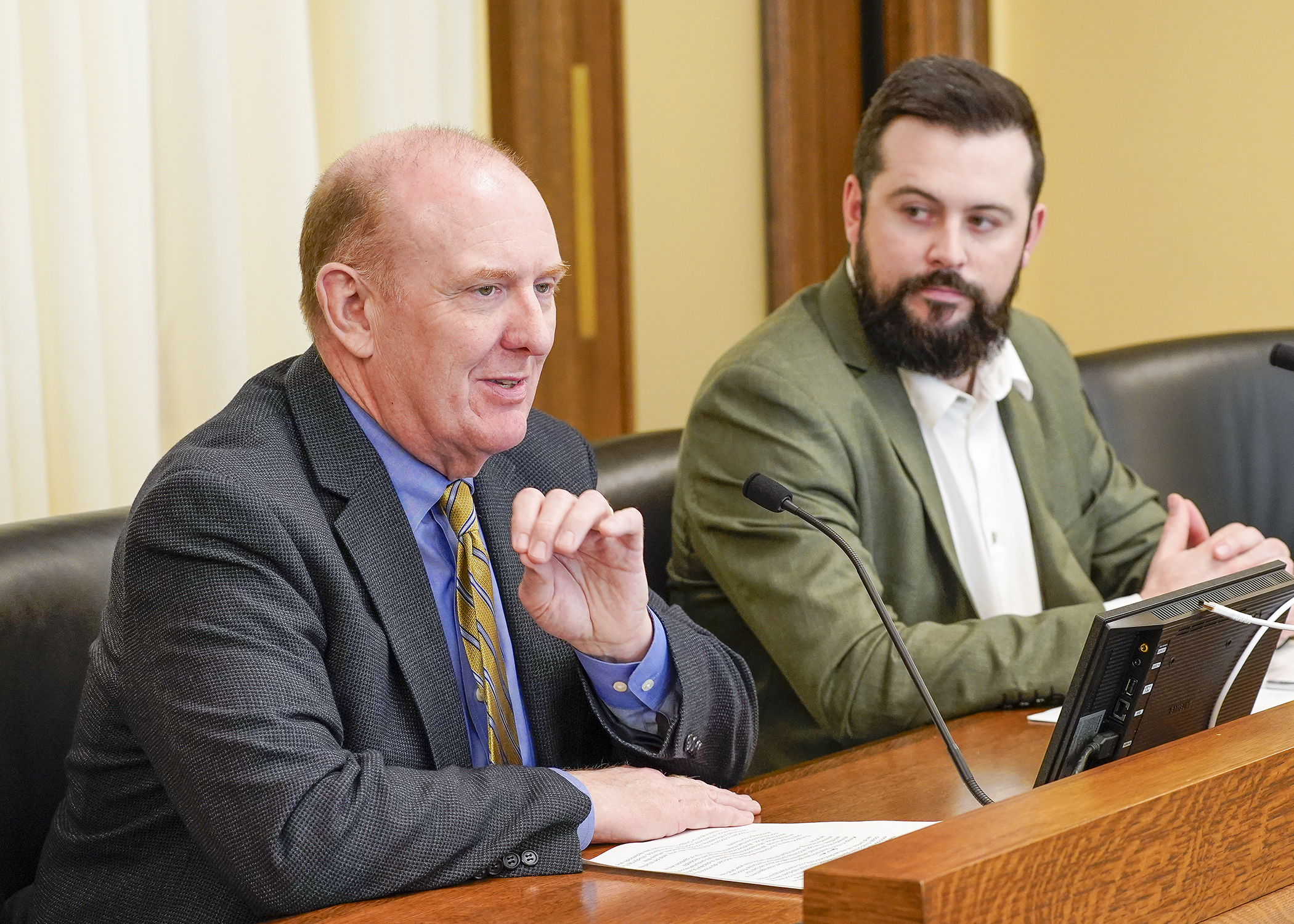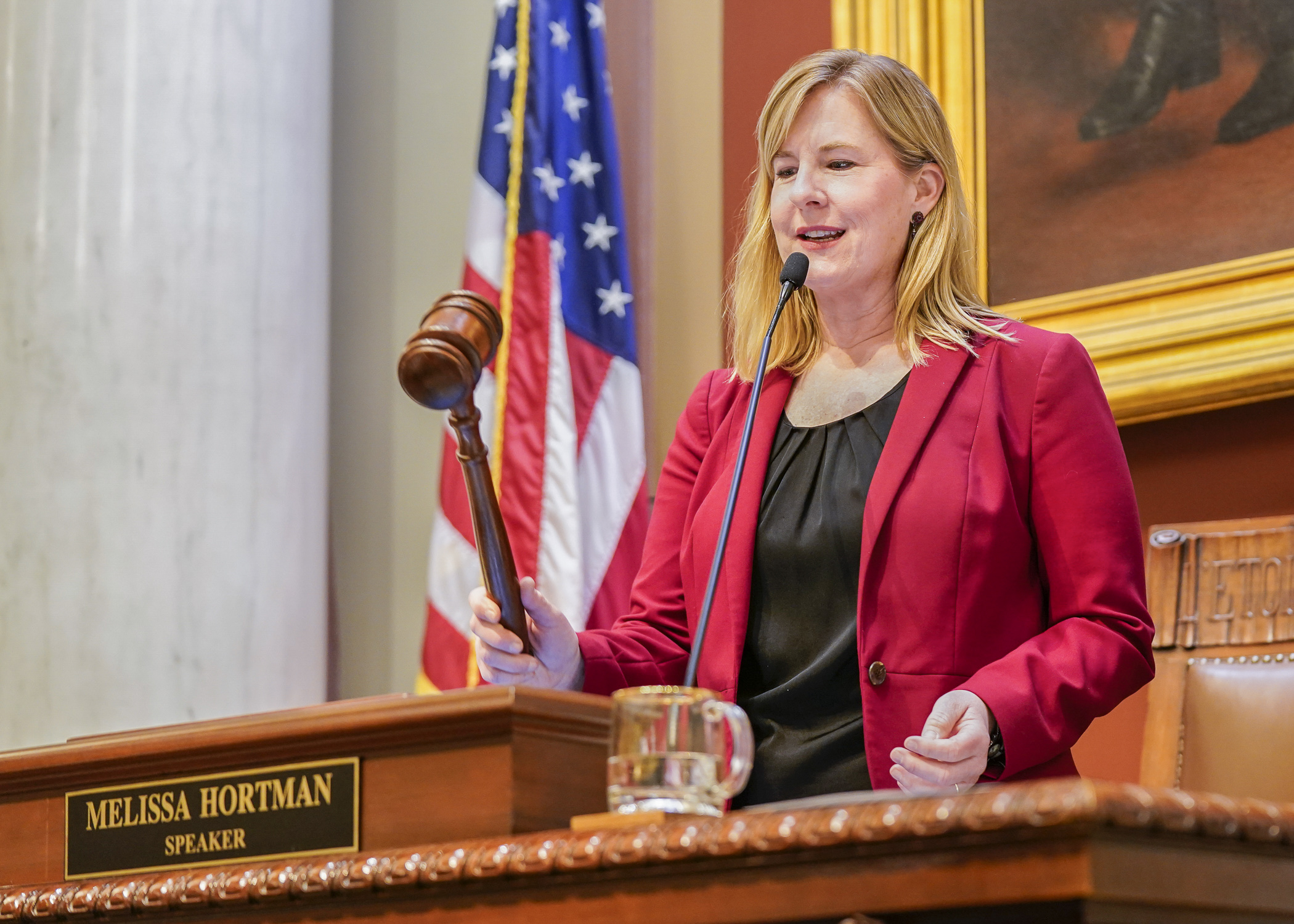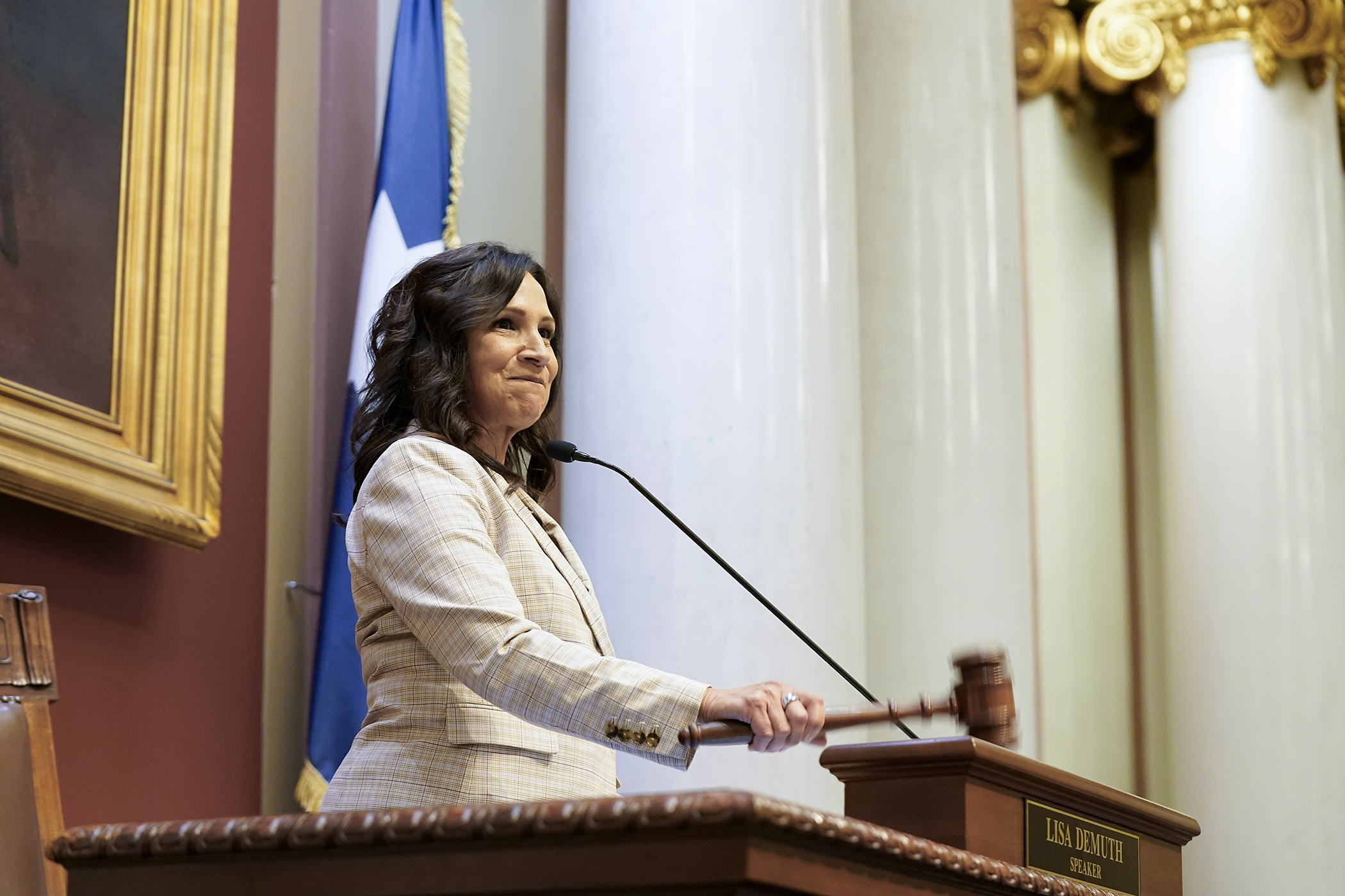House bill seeks to expand 'carbon-free' energy definition to include burning wood waste
Everyone agrees that waste wood can be used to create energy. Be it branches, twigs and treetops from the forest floor or discarded pieces from a lumber or paper mill, that wood can be burned to produce steam and electricity.
But is it “carbon-free”? Or “carbon-neutral”? Rep. Spencer Igo (R-Wabana Township) says yes.
That’s why he’s sponsoring HF249. It would amend the definition of “carbon-free” technology to include energy produced by a utility that combusts wood chips derived from timber harvesting operations.
On Tuesday, the House Energy Finance and Policy Committee approved the bill, as amended, by a voice vote and sent it to the House Floor.
Legislation enacted in 2023 requires municipal utilities and cooperatives to generate or procure 80% of their electricity sold to Minnesota customers from “carbon-free” technologies by 2030, 90% by 2035, and 100% by 2040.
 Ray Higgins, executive vice president of the Minnesota Timber Producers Association, testifies before the House Energy Finance and Policy Committee Feb. 25 in support of a bill sponsored by Rep. Spencer Igo, right, to amend the definition of “carbon-free.” (Photo by Andrew VonBank)
Ray Higgins, executive vice president of the Minnesota Timber Producers Association, testifies before the House Energy Finance and Policy Committee Feb. 25 in support of a bill sponsored by Rep. Spencer Igo, right, to amend the definition of “carbon-free.” (Photo by Andrew VonBank)“Minnesota has a vibrant and active timber industry,” Igo said. “And in that timber industry, we produce lots of byproducts, whether that be slash, wood chips or sawmill dust.
“We have no valuable markets for this residual wood waste to go besides going into landfills to rot and emit carbon. Or it’s being laid down in our forests, where it’s a hazard for fires, insects and blight.”
Igo referred to burning waste wood as “renewable carbon-free power,” but more than one committee member took issue with that description, as well as Igo’s contention that it could be called “carbon-neutral.”
One was Rep. Larry Kraft (DFL-St. Louis Park), who asked how a burning process that releases carbon into the atmosphere could be called “carbon-neutral.” Igo replied by using the example of cutting down a stand of 60-year-old poplar trees.
“In that whole lifespan, it’s been sequestering carbon, storing carbon, taking it out of the atmosphere, cleaning it up,” Igo said. “And then what we’re talking about here is what’s left behind when we take that wood to market. Just the limbs and branches. So, in that timespan, it’s sequestered more than it will emit when it’s burned. Hence, it’s making it carbon-neutral.”
Rep. Katie Jones (DFL-Mpls) said that she’s interested in creating a market for wood waste, “but I’m not on board with calling this carbon-free.” Rep. Patty Acomb (DFL-Minnetonka) agreed, saying, “Biomass does not fit into that bucket.”
The Public Utilities Commission expects to make a decision by the end of this year about how “carbon-free” should be defined.
Related Articles
Search Session Daily
Advanced Search OptionsPriority Dailies
Speaker Emerita Melissa Hortman, husband killed in attack
By HPIS Staff House Speaker Emerita Melissa Hortman (DFL-Brooklyn Park) and her husband, Mark, were fatally shot in their home early Saturday morning.
Gov. Tim Walz announced the news dur...
House Speaker Emerita Melissa Hortman (DFL-Brooklyn Park) and her husband, Mark, were fatally shot in their home early Saturday morning.
Gov. Tim Walz announced the news dur...
Lawmakers deliver budget bills to governor's desk in one-day special session
By Mike Cook About that talk of needing all 21 hours left in a legislative day to complete a special session?
House members were more than up to the challenge Monday. Beginning at 10 a.m...
About that talk of needing all 21 hours left in a legislative day to complete a special session?
House members were more than up to the challenge Monday. Beginning at 10 a.m...